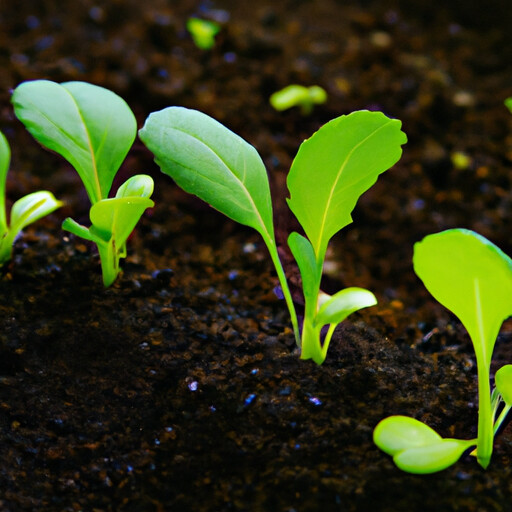
While the idea of growing your own vegetables can feel a bit intimidating, the truth is that there are many plants which are easy to cultivate, like cabbage! Growing cabbage from seed might even be easier than you think.
This cool-season vegetable delivers a bounty of nutrition and makes an excellent addition to any home garden, particularly in Israel's climate. Starting your cabbage from seed not only offers the satisfaction of watching your plants grow, but also ensures a fresh, chemical-free supply throughout the season. To help you get started, we'll guide you through key steps for successfully starting your cabbage seeds, preparing the soil for transplanting, and caring for your plants to ensure a healthy and bountiful harvest. Embrace your green thumb and let's dive into the world of homegrown cabbage!
Why Growing Cabbage from Seed is Easier Than You Think
Cabbage is a nutritious, cool-season vegetable that thrives in Israel's climate. It offers a vibrant green color and unique taste to a variety of dishes. Growing cabbage from seed is a simple process that can provide a reliable supply of fresh, chemical-free cabbage throughout the season. Choosing the seed option over store-bought seedlings gives you a wider range of cabbage varieties to explore, as well as ensuring healthier plants from the start.
By growing cabbage from seed, you can exercise more control over the growing process and observe the development of your plants from their earliest stages. Most importantly, growing cabbage from seed in Israel is cost-effective. Investing in quality seeds rewards you with an abundance of the crop that can be enjoyed throughout the season. In this article, we will delve further into how easy and rewarding it can be to grow cabbage from seed.
Tips for Successful Cabbage Seed Starting
Starting cabbage seeds successfully requires attention to a few crucial details. First, source high-quality seeds from a reputable provider, ensuring good germination rates and healthy, disease-free plants. Next, select an appropriate location for seed starting, typically indoors, where you can control the temperature and light exposure. Ideally, maintain a consistent temperature of 18-21°C (64-70°F) for optimal germination.
Proper seed spacing and adequate lighting are equally important. Space seeds at least 1.5 cm apart in trays and provide 12-14 hours of bright, indirect sunlight or artificial light daily. Monitor the moisture level and keep the soil moderately moist but not waterlogged to prevent root rot. Following these tips will help you grow healthy, strong cabbage seedlings ready for transplantation outdoors.
Preparing the Soil for Your Cabbage Seedlings
Choosing the right type of soil is a crucial step when planting cabbage seedlings. Cabbage plants prefer a well-drained soil with a pH level between 6.0 and 6.8. Adding organic matter, such as compost or aged manure, will significantly improve the soil's structure and provide essential nutrients for the growing plants. Good drainage is also vital for preventing root rot and other diseases.
Before planting your cabbage seedlings, consider amending the soil with organic materials and testing the pH level to ensure it meets the plants' requirements. Proper soil preparation will create a favorable environment for your cabbage seedlings, thus improving their chances of thriving and producing a bountiful harvest.
Planting Your Cabbage Seedlings Outdoors
Once your cabbage seedlings have developed healthy root systems and four to five true leaves, it's time to transplant them into your outdoor garden. Start by choosing a location that receives full sun, or at least six hours of sunlight per day. Additionally, ensure the selected location has well-draining soil, as cabbage plants do not fare well in soggy conditions.
Before transplanting, gradually harden off your seedlings by exposing them to the outdoor environment. This process helps them adapt to the changing conditions. Plant each seedling 40-60 centimeters apart to provide ample room for growth. Dig holes deep enough to accommodate the root system, and gently place the seedlings into the holes, covering them with soil. Water the transplanted seedlings thoroughly, ensuring they settle into their new environment. In later sections, we'll discuss how to care for your cabbage plants throughout their growing cycle, including tips for watering and fertilizing them.
Caring for Your Cabbage Plants
Caring for your cabbage plants involves creating a perfect balance of light, water, and nutrients. To ensure the healthiest growth, place your plants in a location with ample sunlight, ideally 6-8 hours per day. Regular watering is important; consistently maintain soil moisture without overwatering. In Israel, consider providing shade during hot summer days to avoid plant stress and damage.
Feeding your cabbage plants with a nutrient-rich fertilizer is essential for optimal growth. Apply a balanced slow-release fertilizer, every 4-6 weeks, to provide adequate nutrition. Regularly inspect your plants for pests or diseases, using organic or chemical treatments when necessary. Timely care ensures a healthy harvest, rewarding you with fresh, nutritious cabbage throughout the season.
